Agronomy: New Trait in Soybeans: Chloride Exclusion
Next time you read a soybean seed catalog and check variety characteristics you might see a new trait listed—chloride excluder. An Illinois farmer and ISA director emailed me and asked what chloride exclusion meant. He said he planted Syngenta’s NK 32-L8 variety and the product guide listed it as a “chloride excluder with dependable stress tolerance.” Phil Krieg, agronomic service representative with Syngenta, said “The chloride excluder characteristic is helpful in areas where soil salts are higher, similar to what we sometimes experience in Southern Illinois. It presents no disadvantage to the variety, just an added benefit.” I have [...]
Agronomy: Summarizing the Soybean Season from Northwest Illinois
Weather and weed challenges were the two main issues in 2016; however, yields will still be above average. After record warm and wet periods over winter we moved into a very dry early spring with some areas being more than 10 inches behind normal rainfall by late June. Soybean planting generally went well and early planted soybeans looked best all spring. Weed control challenges began to appear early with escapes of waterhemp, giant ragweed, velvetleaf and even volunteer corn being very common. Weed control failures were driven by a host of issues including inadequate soil residual programs, lack of [...]
Weed Management: Illinois Researchers Confirm PPO Inhibitor Resistance in Palmer Amaranth
Weed control in Illinois is about to get a little tougher for some farmers. Researchers in the state have announced they’ve found PPO inhibitor resistance in some fields of Palmer amaranth. The determination makes Illinois the third state, behind Arkansas (2011) and Tennessee (2015), to confirm the issue. Southern Illinois University (SIU) Carbondale, in coordination with testing by the University of Illinois (U of I), made the determination. Three populations showed control failure after treatment with PPO inhibitor active ingredients fomesafen or lactofen (Flexstar, Cobra). SIU researchers collected tissue samples and submitted them to the U of I for [...]
Agronomy: The Six Secrets of Soybean Yield
This post highlights material covered in a breakout session sponsored by Asgrow/DEKALB at the recent ILSoyAdvisor Field Days. To see other posts in this Field Days recap series, click here. Maximizing your soybean yields starts with proper crop management. Dr. Fred Below at the University of Illinois has been studying the factors that impact soybean production and ranks them by their impact on yield: Weather Fertilizer Genetics Foliar protection (insects, diseases) Seed treatment Row spacing Some factors, like weather, are outside the scope of growers’ control, but should always be accounted for. It’s also important to remember that crucial [...]
Plant and Soil Health: Taking the Confusion out of Lime Recommendations
Editors’ Forward: On August 30, ILSoyAdvisor hosted the webinar “Soil sampling is the first step to planning high yield soybeans.” The presenter, an agronomist with a commercial laboratory in Illinois, talked about measuring water and buffer pH to calculate lime requirements. The Illinois Agronomy Handbook references how lime recommendations should be made in the state, including both buffer pH and CEC/organic matter. We asked Dr. Robert Hoeft to explain the difference and why buffer pH isn’t necessarily recommended. Soil pH values given on a soil test report indicate whether the soil is acid, less than 7.0, or alkaline, greater [...]
Agronomy: Dan Arkels’ Yield Challenge Approach
Dan Arkels, 2015 100 Bushel Challenge Winner, explains that growing 100 bushel soybeans does not occur from changing one or two variables; a successful yield is the result of a combination of factors. Watch the video below to hear more.
Agronomy: Learning From Brazilian Soybean Yield Champs
The Brazilian yield contest winner routinely breaks 100 bushels per acre today. To reach the 100 bu/acre mark (6.725 t/ha or 112.1 bags/ha) requires strategy, with winners adopting some new practices each season. The following is a description of the practices they follow and what they have learned along the way. I have underlined the novel things they have discovered that we should pay attention to including seed vigor, planting conditions, soil fertility below 1.3 feet and compaction. They already focus on planting the best genetics, managing stress and applying fungicides, insecticides, stimulants and nutrients on a routine basis. [...]
Plant and Soil Health: Field Day Recap: Intensify Your Fertilizer Strategy
This post highlights material covered in a breakout session sponsored by Helena Chemical Company at the recent ILSoyAdvisor Field Days. To see other posts in this Field Days recap series, click here. Avoid setbacks in maximizing your soybean yield by optimizing your production practices. It’s important to recognize that soybeans respond positively to timely management practices. Use a soil test at least every four years, and fertilize to feed your crop in order to meet your yield goals. Start with a strong fertility base applied before planting. Consider the differences in fertilizer need and use between corn and soybeans. [...]

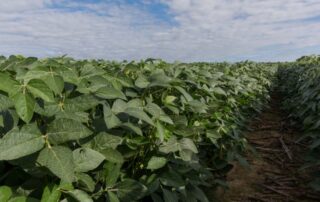
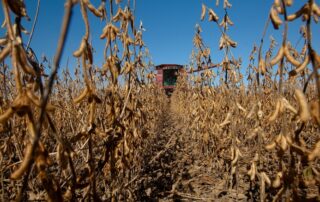
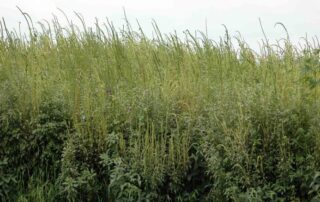
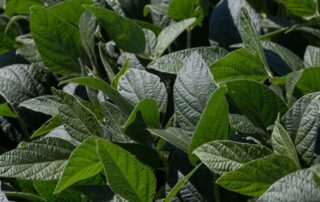
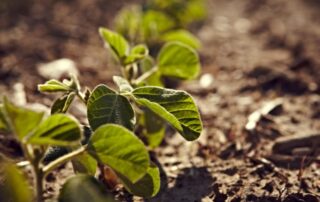
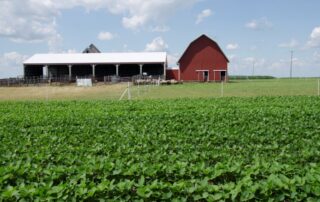
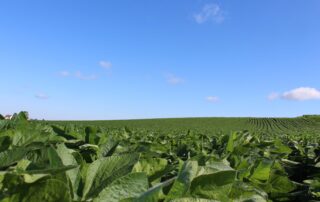
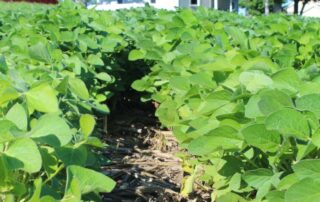



 and then
and then